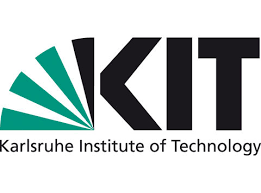Karlsruher Institute For Technology: In the battery competence cluster AQua, KIT optimizes the mass production of high-quality lithium-ion batteries with automatic error detection
Powerful, durable and safe: With these properties and a low price, batteries “Made in Germany” could soon be among the best in the world. This should be made possible, among other things, by progressive approaches to quality assurance and analysis in production, which are now being developed and tested at the Karlsruhe Institute of Technology (KIT). The work in the battery research cluster AQua is carried out in close cooperation with research partners in the “Battery Research Factory” initiated by the Federal Ministry of Education and Research (BMBF).
Ensuring maximum quality at the minimum price – that is what scientists want to do in a new research platform launched at KIT as part of the battery competence cluster AQua (stands for: analysis / quality assurance). To do this, they first look at every production step, from the raw materials to the finished cell, in order to identify possible sources of error. Subsequently, the handling of errors during ongoing production should be optimized and automated in such a way that a consistently high quality can be guaranteed in the end. “Every step in production has to be perfect. Everything is coordinated and every error can affect the later performance of the cells, “says Professor Helmut Ehrenberg from the Institute for Applied Materials (IAM-ESS) at KIT, who coordinates the research. “The performance of analytics and quality assurance therefore has a decisive influence on the quality, safety and costs of a cell.” The researchers develop their solution approaches using methods of integrated production control and implement them in the entire process chain.
Research on automatic error detection
In order to identify critical errors in the production process as early as possible and to interpret them correctly, the scientists in the AQua projects work, among other things, according to the principle of Failure Mode and Effects Analysis (FMEA). “In doing so, we introduce errors in a targeted and controlled manner in order to precisely quantify the connection between a disruption and the effects on the cells,” explains Dr. Lea de Biasi, one of the researchers in the project. “If we now define specific performance criteria as quality goals, we can set tolerance limits for all relevant process steps.” These are then used directly in the production process. To this end, AQua also develops methods With which critical influencing variables – such as the homogeneity of the electrode coating or the residual moisture of the components at the beginning of cell construction – can be recorded in real time. With the automatic defect detection, intermediate products are automatically checked immediately after the respective process step and defective pieces are sorted out. “It is also possible to draw conclusions about the causes of the error,” says de Biasi. “In this way we can eliminate process disruptions at an early stage and avoid further costs due to rejects.”
Manufacture of a stack of electrodes in the laboratory.
Production remains
flexible thanks to semi-automated production systems. (Photo: Markus Breig, KIT)
Data infrastructure for fast research transfer
The new research platform is supplemented by an accompanying project that is being carried out at KIT by Dr. Michael Selzer from the Institute for Applied Materials – Computational Materials Science (IAM-CMS). Among other things, this involves exchanging the platform with the other battery competence clusters of the “Battery Research Factory” and cooperating with industry. The focus is on setting up a data infrastructure: “In the experiments and large-scale simulations in the AQua project, we gain large amounts of data that have to be evaluated using specific data analysis methods using standardized workflows,” says Selzer. “With the data infrastructure, we are creating sustainable access to this research data and analysis tools. “This is a decisive contribution to quality assurance and also to the transfer of research in the field of battery production, emphasizes Professor Britta Nestler from IAM-CMS, who supports the project as an expert in microstructure simulation. “In AQua we want to develop a comprehensive and cross-process understanding of how the interaction of materials, production steps and special electrochemical features affect the structures and properties of the battery.”
Further information: https://www.bmbf.de/de/batterieforschung-in-deutschland-662.html
Details on the KIT Energy Center: https://www.energie.kit.edu
As “The Research University in the Helmholtz Association”, KIT creates and imparts knowledge for society and the environment. The aim is to make significant contributions to global challenges in the fields of energy, mobility and information. To this end, around 9,600 employees work together on a broad disciplinary basis in the natural, engineering, economic, humanities and social sciences. The KIT prepares its 23,300 students for responsible tasks in society, economy and science through a research-oriented university course. The innovation activity at KIT bridges the gap between knowledge and application for social benefit, economic prosperity and the preservation of our natural resources.

